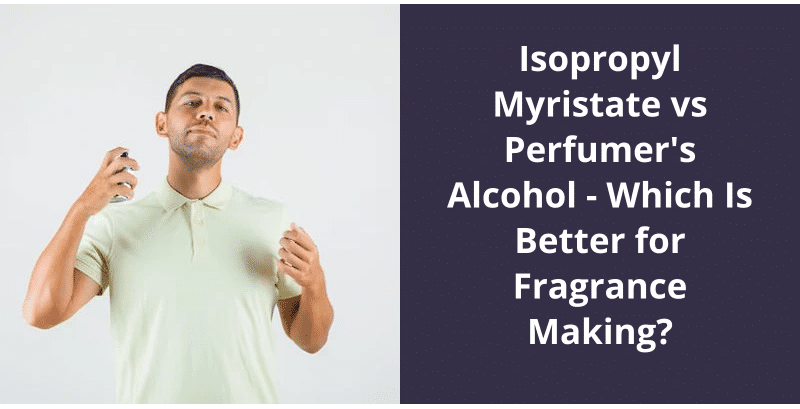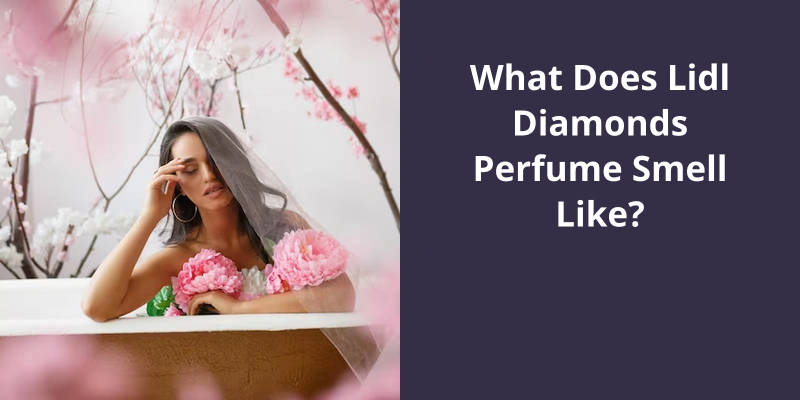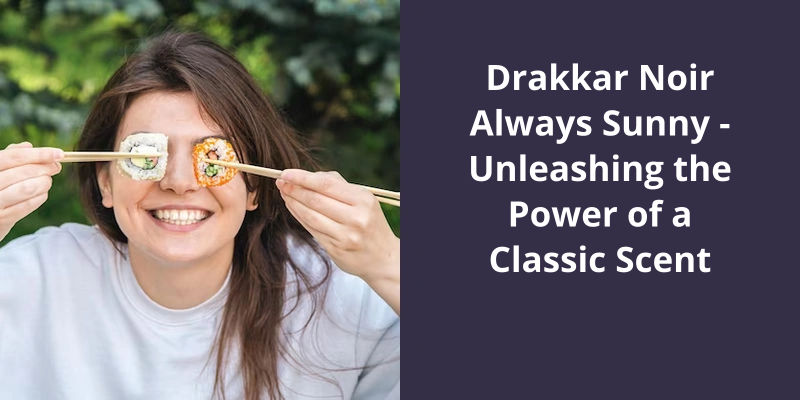Isopropyl Myristate and Perfumer’s Alcohol are both used in fragrance making, but they have different roles and effects. Isopropyl Myristate is an oil-based carrier, acting as a base for perfume ingredients, which has the advantage of being less drying on the skin, but the fragrance may not evaporate or distribute as widely. On the other hand, Perfumer’s Alcohol, usually comprised of ethanol and other solvents, is often chosen because it allows a fragrance to evaporate from the skin, diffusing the scent into the air and leaving a long-lasting effect. However, it can be harsh on sensitive skin. The choice between the two depends on personal requirements and the desired result of the perfume.

Can I Use Isopropyl Alcohol in Perfume?
Instead, it’s recommended to use perfumers alcohol, or “denatured alcohol,” which is specifically designed for use in perfumes. Perfumers alcohol typically contains a blend of ethanol and other ingredients that help to enhance the scent and ensure the proper dilution of fragrance oils.
Using isopropyl alcohol in perfumes can also lead to instability in the final product. Isopropyl alcohol is a type of solvent that can dissolve some materials but not others. This can result in uneven dissolution of your fragrance oil, leading to clumping or separation in your perfume.
When it comes to creating high-quality perfumes, it’s important to use only the best ingredients.
By choosing the right ingredients and using proper techniques, you can create a signature scent that will stand the test of time and delight your customers for years to come. So, go ahead and ditch the rubbing alcohol and stock up on perfumers alcohol – your nose (and your skin) will thank you for it!
The Difference Between Natural and Synthetic Fragrances and Their Effects on Perfume Longevity
Natural fragrances are derived from natural sources such as plants and flowers, while synthetic fragrances are chemically created. Natural fragrances tend to be less long-lasting than synthetic fragrances, which are specifically designed to have a longer lifespan. This is because natural fragrances tend to evaporate quicker due to their volatile nature. However, natural fragrances are often preferred by those who’re looking for a more organic and sustainable option.
Isopropyl Myristate is a versatile ingredient that’s widely used in various industries. Apart from being used as a solvent, binder and diluent in perfumes and food flavorings, it’s also known for it’s emollient properties, moisturizing benefits, and as a thickening agent. In this article, we will explore the different uses and characteristics of Isopropyl Myristate, and how it’s become a popular ingredient in various skincare and cosmetic products.
Is Isopropyl Myristate a Thickening Agent?
Isopropyl Myristate (IPM) is a colorless and odorless ester derived from the combination of isopropyl alcohol and myristic acid. It’s widely used in the cosmetic and pharmaceutical industries, and has become a popular ingredient due to it’s excellent skin-feel properties. While IPM is primarily known for it’s role as a non-greasy emollient and moisturizer, it’s also a popular thickening agent.
It can help to add a thick and creamy texture to products without leaving a greasy or oily residue, making it an excellent choice for use in cosmetic formulations. Additionally, it’s non-toxic and hypoallergenic, which allows it to be easily incorporated into products for sensitive skin.
It’s solubility in most organic solvents and ability to dissolve essential oils make it an ideal solvent choice in fragrance blending. The ester-based compound also helps to bind and stabilize the fragrance components, ensuring that the scent remains consistent and long-lasting. IPM is also used as a diluent to reduce the intensity of stronger fragrances and prevent fragrance oils from evaporating too quickly.
Furthermore, IPM has a number of unique characteristics that make it a versatile ingredient across a range of applications. For instance, it’s excellent spreadability and skin penetration properties, allowing it to easily be absorbed into the skin, and can help to reduce the visibility of fine lines and wrinkles. It’s non-comedogenic, which means it won’t clog pores, and is ideal for use in products for oily or acne-prone skin. Additionally, IPM is a hypoallergenic ingredient, which makes it a safe option for those with sensitive skin.
Isopropyl Myristate is a widely used ingredient in the cosmetic and pharmaceutical industries, primarily due to it’s excellent emollient and moisturizing properties. It’s also an effective thickening agent, and is commonly used as a solvent, binder and diluent in perfumes and food flavorings. It’s compatibility with a wide range of products and it’s hypoallergenic properties makes it an ideal ingredient for use in skin care, hair care, and fragrance formulations.
Source: Isopropyl Myristate CAS 110-27-0 – Acme-Hardesty
Now that we’ve discussed what isopropyl myristate is, let’s delve into it’s solubility properties. Specifically, isopropyl myristate can be either oil or water-soluble. This versatility makes it a popular ingredient in many personal care, cosmetics, and pharmaceutical products.
Is Isopropyl Myristate Oil or Water Soluble?
Whether or not isopropyl myristate is soluble in water depends on various factors such as the pH levels, temperature, and the concentration of other substances in the solution. However, it can be mixed with water-based substances by using a suitable emulsifying agent.
Isopropyl myristate has several benefits when used in skincare products. It’s non-greasy and easily absorbed into the skin, making it a popular ingredient in many cosmetics. It helps in smoothing the skin texture, improving skin hydration, and reducing the appearance of fine lines and wrinkles. It also enhances the spreadability of other ingredients in a formulation, making them easier to apply.
It’s used as a base material for medications and as a carrier oil for fragrances. It’s also a common ingredient in many lubricants used in the manufacturing process of various products.
Isopropyl myristate is considered safe for human use in cosmetics and other products. However, it can cause skin irritation and allergic reactions in some individuals. It should be used in moderation and under the guidance of a professional.
It’s several benefits when used in skincare products and is commonly used in the pharmaceutical and fragrance industries. While it’s considered safe, it should be used with caution and under the guidance of a professional.
Understanding the differences between isopropyl myristate and isopropyl palmitate is crucial for those in the cosmetic and personal care industries. While both ingredients are esters of isopropyl alcohol, their distinct chemical compositions can impact the final product in different ways. Let’s take a closer look at the properties and benefits of each ingredient.
What Is the Difference Between Isopropyl Myristate and Isopropyl Palmitate?
Isopropyl myristate and isopropyl palmitate are two commonly used ingredients in skincare and cosmetic products. They’re both esters of isopropyl alcohol, which means that they’re derived from the reaction between isopropyl alcohol and a fatty acid. However, they differ in the type of fatty acid used.
One of the main differences between isopropyl myristate and isopropyl palmitate is their consistency.
Another difference between the two esters is their comedogenic potential. Isopropyl myristate has a higher comedogenic rating compared to isopropyl palmitate, which means that it’s a greater tendency to clog pores and cause acne. This is important to consider when formulating products for acne-prone or sensitive skin types.
This can affect the overall texture and feel of the final product, and must be taken into consideration when formulating products for specific uses and target audiences.
Understanding their differences is important in formulating effective and safe skincare and cosmetic products.
When it comes to creating perfumes, there are a variety of factors to consider, including the choice of solvent for the fragrance concentrate. Many perfumers choose to use alcohol as their carrier solvent, particularly perfumer’s grain alcohol. This solvent is highly versatile and allows for the creation of fine fragrances with exceptional clarity and depth. But what makes perfumer’s alcohol the best solvent for perfumes? Let’s take a closer look.
What Is the Best Solvent for Perfumes?
Perfumers Alcohol, unlike other solvents, can dissolve most of the essential oils and aroma chemicals without separating over time. The composition of Perfumers Alcohol is 99% pure Ethanol and 1% Deionized Water, which serves as a stabilizer. This alcohol, being a volatile solvent, evaporates quickly and leaves behind the fragrance concentration. It’s also the primary solvent for making an oil-based perfume, which requires a higher concentration of fragrance oils.
Another solvent option for perfumes is DPG (Dipropylene Glycol). It’s a clear, colorless, and odorless liquid that’s derived from petroleum. DPG is primarily used in making room sprays and perfumed body products because of it’s longer-lasting scent and moisturizing properties. It’s a lower volatility rate than alcohol and is less irritating to the skin. However, DPG isn’t compatible with all fragrance oils, so compatibility tests are necessary before using it as a solvent.
Fractionated Coconut Oil is another option for those looking for a more natural solvent for their perfumes. It’s a non-greasy, light, and odorless liquid that’s derived from coconuts. Fractionated Coconut Oil has a longer-lasting scent than alcohol-based perfumes but can be less effective in transporting heavier oils.
There are many other solvents out there, such as Jojoba Oil, Grape Seed Oil, and Sunflower Oil. However, they’re usually used as carrier oils to dilute the fragrance concentration rather than as solvents. Solvents are the primary medium used to dissolve and alkylate the fragrance notes into one another. The choice of solvent depends on the type of perfume, the desired fragrance concentration, and the skin sensitivity and allergy concerns of the user. As with any fragrance formulation, compatibility tests and knowledge of chemical interactions are crucial to avoid unpleasant reactions and to achieve the best possible scent for the perfume.
How to Make Your Own Perfume Using Different Solvents
There are various ways to create your own perfume, but one method involves using different solvents like water, oil, and alcohol. The process typically involves blending essential oils together for the desired scent and then diluting it in a solvent of your choice. The amount and type of solvent used can affect the longevity and strength of the perfume. Experimentation and personal preference are key in creating a unique and personalized scent.
Conclusion
Both these ingredients offer unique benefits and drawbacks, depending on the intended application. Therefore, it's crucial to weigh the advantages and disadvantages of each ingredient carefully before selecting the one that suits your needs. Ultimately, it would be unfair to say that one is better than the other, as it depends on the intended purpose of the product. So, it's vital to make informed decisions based on the products' needs and the end-users' preferences.





